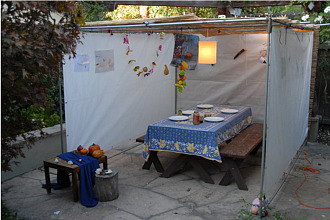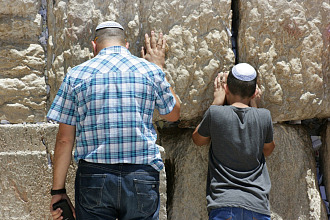Food is an important part of the celebration of Jewish festivals. Not only does the preparation and serving of specially prepared dishes bring people together in communion, but the different types of fruits, vegetables, and meats consumed during the festivals serve as symbols. For instance, during the celebration of Rosh Hashanah, apples are dipped in honey or sugar to signify our wish for a sweet new year. In addition, dates are eaten as we petition HaShem to allow our enemies to be consumed. A delicious way to make a wish for a peaceful, prosperous, and sweet new year tangible is to try our honey-glazed, apple-date bread recipe. Served fresh from the oven, it is sure to sweeten your new year celebrations.
Honey-Glazed, Apple-Date Bread
Bread Mixture
2 Cups Flour
1 Teaspoon Salt
4 Teaspoons Baking-Powder
2 Tablespoons Brown Sugar
4 Tablespoons Shortening
3/4 Cup Milk
1 Cups Pitted and Chopped Dates
1 Teaspoon Cinnamon;
1 Tablespoon Brown Sugar
1 Egg, Well Beaten
2 Tablespoons Melted Butter or Margarine
1 Cup Chopped Pecans
2 Apples: 1 Diced; 1 Cored and Thinly Sliced
Honey Glaze
1/4 Cup Butter or Margarine
1/4 Cup Light Honey
1⁄2 Cup Instant Milk Powder Pinch Salt
1 Teaspoon Vanilla Extract or Grated Citrus Fruit Rind
Milk For Thinning (Optional)
Bread
Sift flour, measure, and sift with baking-powder, salt, and sugar. Cut in shortening and add dates. Add sufficient milk to which egg has been added to make a stiff dough. Fold in diced apples and pecans. Mix thoroughly. Pour into well-oiled shallow pan. Brush dough with melted butter or margarine. Arrange sliced apples in row in the dough. Brush apples with more melted butter or margarine and sprinkle with cinnamon and brown sugar which have been mixed together. Bake at 4000F for 20 minutes or until apples are tender. Cool on racks, then glaze.
Honey Glaze
In a food processor or blender, mix all ingredients until smooth. Thin the mixture with a little milk if it is too thick to spread.
Originally from Shabbat Shalom Magazine, Winter 2003/2004
Picture originally found here


























